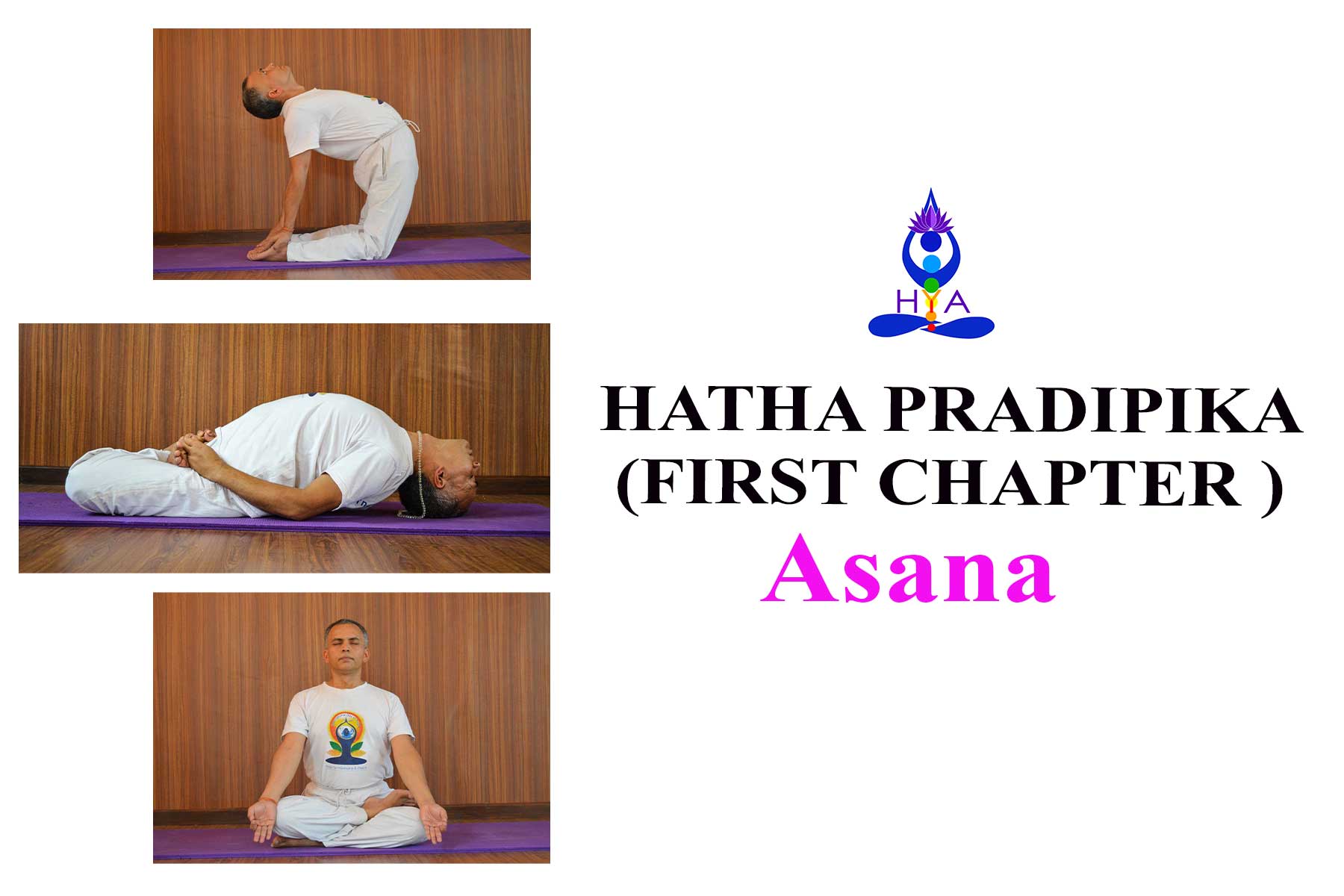
16 Jan 2021 HYN Himalayan Yoga Academy
Hatha Pradipika is one of the foremost texts on Hatha Yoga. It is divided into five chapters, covering Asana, Pranayama, Mudra, Samadhi, and Yoga therapy. The author of the Hatha Pradipika First Chapter text is Swatmarama. This name may be allegorical: Swatmarama means “one who delights in his Self/Atman”. Thus, the reader may wonder if the writer changed his name to mention the true advantages of Yoga or if it was a name he was given after realizing the greatest merits of Yoga.
“Shreeaadinaathaaya Namo’stu tasmai yenopadishtaa hathayogavidhaa !
Vibhraajate Pronnataraajayogamaarodhumichchhoradhrohiniv !!1.1
An important feature of the text is that Hatha Yoga and Raja Yoga are not considered separate entities. One of a physical nature and the other spiritual, but rather an integrated whole, both dependent upon each other for the essence of Yoga to be realized. Raja Yoga is mere theory unless embodied and practically understood whilst the practice of Hatha Yoga is fixed in the corporal sphere unless a deeper integration of spirit is infused into it. When the mind is finally exhausted from its identification with Knowledge and knowable objects, the atman – the soul – is all that remains. Then, there is no longer any duality in the working mind, and the soul may shine through in its unobstructed essence.
“Hathaviddhya param gopyaa yoginaa siddhimichchhataa !
Bhaved veeryavatee guptaa nirveeryaa tu prakaashitaa !! 1.11
There is some speculation as to whether Swatmarama actually had a deeper experience of his topic or whether he was merely a hired scribe compiling a system. However, Yoga was traditionally conveyed through a lineage from teacher to student. Some of the more obscure passages are in keeping with the tradition of preserving the secrecy of the true meaning of Yoga (1.11). This tradition may perhaps have evolved to preserve the potency of the practice in a world of triviality.
Chapter 1: Injunctions on how to perform Asanas
Certain principles are given for the successful outcome of the practice of Asanas. After describing the proper place of practice, the author then advises us on 6 negative and 6 positive behaviors which each respectively diminish or cultivate greater success in Yoga.
6 causes that make a yoga practice futile are (1.15):
1. Over-eating
2. Over-exertion
3. Talking too much
4. Severe austerities
5. Public contact
6. Fickleness of mind
The 6 that bring speedy success are (1.16)
1. Enthusiasm
2. Courage
3. Perseverance
4. Proper understanding
5. Determination
6. Avoiding excessive contact with people
Here, as well as in many other Yoga texts, it is a 6-limb practice that begins with Asana. The stress is placed on cultivation of practical exercises, but the Yamas and Niyamas are not be abolished altogether: they act as a grounding influence to make the mind receptive to Yoga within the postures. Some manuscripts of HYP include Yamas and Niyamas, whilst others do not. In copies that do, these (Yamas and Niyamas) are each 10 in number:
Yamas (1.17)
1. Ahimsa
2. Truth
3. Non-stealing
4. Continence
5. Forgiveness
6. Endurancec
7. Compassion
8. Meekness
9. Sparing diet
10. Cleanliness
Niyamas (1.18)
1. Tapas
2. Patience
3. Belief in God
4. Charity
5. Adoration of God
6. Hearing discourses on the doctrine of religion
7. Shame
8. Intellect
9. Japa
10. Yajna
All manuscripts do agree upon the purpose of Asanas: “It is the first limb of Hatha Yoga and Asanas are therefore described first. I should be practiced for steadiness of posture, health and lightness of body” (1.17 or 1.19, depending on the edition). The rich traditions of postures originating from the sages are merely referred to, and only 15 are mentioned in total. Four of them are considered to be the most important ones, namely, Siddhasana, Padmasana, Simhasana, and Bhadrasana (1.36).
A clear description is given for all the postures mentioned, along with respective benefits.
In addition, the author also suggests that they should be complemented with the practice of Mudras for proper cleansing of the Nadis to take place. Close attention to Nada is also suggested, together with proper observation of food patterns and curbing the senses in general. In short, food is to be taken moderately. It should be well cooked, supplemented with ghee and sweets, and always offered up to the Lord Shiva. Food that may be disturbing to the practice is described as bitter, sour, salty, or hot. Also mentioned are too many green vegetables, sour gruel oil, mustard, and sesame. Consumption of alcohol, fish, meat, yoghurt, buttermilk, plums, oil-cakes, asafetida, garlic, onion, etc., are also said to be bad for the Hatha Yogi (1.61).
